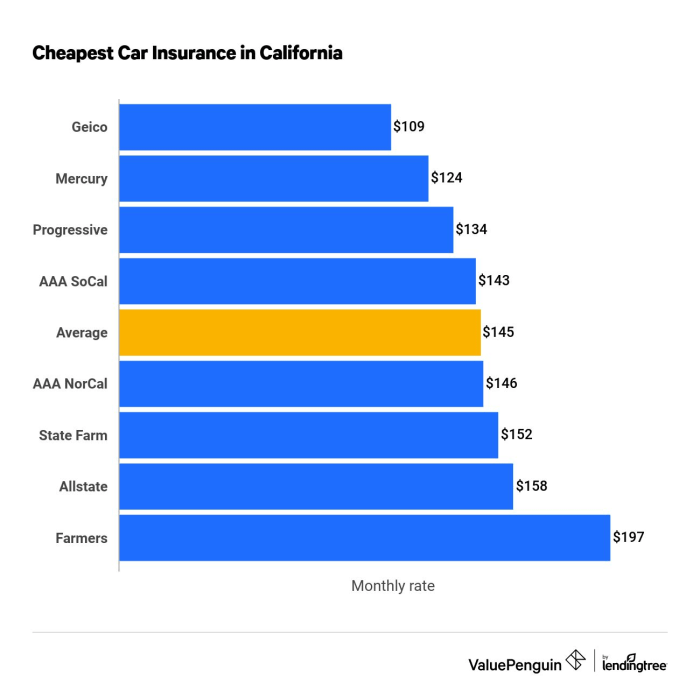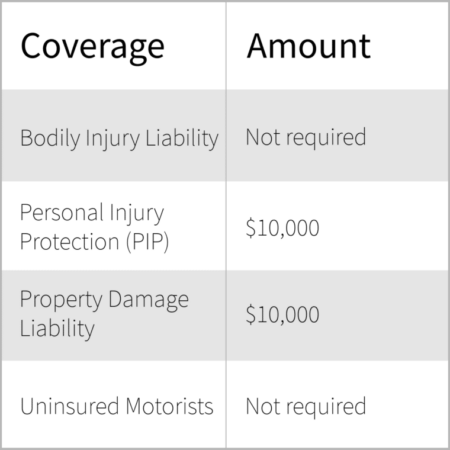
What is the best home and auto insurance company? It’s a question every homeowner and driver asks, and the answer isn’t always simple. With so many insurance companies out there, finding the best fit for your needs can feel like searching for a needle in a haystack. But don’t worry, we’re here to help you navigate this maze and find the perfect policy for your peace of mind.
Choosing the right insurance company is crucial. It’s about more than just getting the lowest price. You want a company that’s financially stable, offers comprehensive coverage, and provides excellent customer service. We’ll explore key factors to consider, compare different insurance options, and guide you through the process of selecting the best company for your home and auto needs.
Understanding Home and Auto Insurance Needs

Navigating the world of home and auto insurance can feel like driving through a maze with no map. But fear not, because understanding your needs is the first step to finding the right coverage. It’s like picking the perfect outfit for a big event – you want something that fits well, protects you, and looks good!
Home Insurance Coverage
Home insurance protects your biggest investment – your house! It covers various risks, including fire, theft, and natural disasters. The type of coverage you need depends on your specific needs and the value of your property. Here are the most common types of home insurance coverage:
- Dwelling Coverage: This protects the structure of your home, including the walls, roof, and foundation.
- Personal Property Coverage: This covers your belongings inside your home, like furniture, electronics, and clothing.
- Liability Coverage: This protects you if someone gets injured on your property.
- Additional Living Expenses Coverage: This covers temporary living expenses if you can’t live in your home due to a covered event.
- Other Structures Coverage: This covers detached structures on your property, like a garage, shed, or fence.
Auto Insurance Premiums
Your auto insurance premiums are determined by various factors, including your driving history, vehicle type, and location. Think of it like a customized price tag for your car insurance. Here’s a breakdown of the key factors:
- Driving History: Your driving record, including accidents and traffic violations, significantly impacts your premium. A clean record usually means lower premiums, while a history of accidents or violations can lead to higher costs.
- Vehicle Type: The make, model, and year of your vehicle affect your premium. Luxury or high-performance cars are often more expensive to insure than basic models.
- Location: Your location plays a role in your premium. Areas with higher crime rates or more accidents typically have higher insurance costs.
- Age and Gender: Insurance companies often consider your age and gender when calculating your premium. Younger drivers and males tend to have higher premiums due to higher risk.
- Credit Score: Believe it or not, your credit score can influence your auto insurance premium. People with good credit scores generally receive lower premiums.
Determining the Right Coverage
Choosing the right amount of coverage for both your home and auto is crucial. It’s about finding the sweet spot – enough coverage to protect you without breaking the bank. Here are some tips to help you determine the right amount:
- Home: Consider the replacement cost of your home and its contents. You want enough coverage to rebuild your home and replace your belongings if they’re damaged or destroyed.
- Auto: Think about the value of your car and the potential cost of repairs or replacement. You should also consider your liability coverage needs. If you’re involved in an accident, liability coverage can help pay for the other driver’s injuries and property damage.
Key Factors to Consider When Choosing a Company
Choosing the right home and auto insurance company is a big decision. It’s like picking your favorite superhero team – you want a company that’s got your back when things get tough, right? To make the best choice, you need to consider some key factors. Think of it as assembling your own “insurance squad” to protect your precious assets.
Financial Stability
It’s crucial to choose a company that’s financially sound and can pay out claims when you need them most. You wouldn’t want to be stuck with a company that goes belly up when your roof needs replacing after a hailstorm, right? Here’s how to assess a company’s financial stability:
- Check their credit rating: Think of it like a report card for insurance companies. A good credit rating, like an A+ in school, indicates they’re financially strong and reliable. You can find these ratings from agencies like AM Best, Standard & Poor’s, and Moody’s.
- Look at their claims-paying history: Have they been paying out claims on time and without a fuss? You can find this information on the company’s website or through the National Association of Insurance Commissioners (NAIC).
- Consider their capital reserves: This is like their emergency fund. A company with healthy reserves is better equipped to handle unexpected events and pay out large claims.
Key Features and Benefits
Now that you’ve got the financial side covered, let’s dive into the perks and benefits offered by different companies. Think of it as the “superpowers” of your insurance squad:
- Discounts: Everyone loves a good deal, right? Look for discounts like safe driving, good student, multi-policy, and bundling home and auto insurance. These discounts can save you serious dough!
- Customer service: You want a company that’s easy to work with, right? Look for companies with excellent customer service ratings, responsive claims handling, and convenient online tools. Think of it like having a helpful sidekick who’s always there to assist you.
- Claims handling processes: This is the real test of a company’s mettle. Look for companies with transparent and efficient claims handling processes. You want a company that’s quick to respond, fair in their assessments, and easy to work with.
Customer Reviews and Ratings
Want to know what other people think about a company? Check out customer reviews and ratings. Think of it like reading movie reviews before you head to the theater. These reviews can provide valuable insights into a company’s strengths and weaknesses:
- Websites like Yelp, Trustpilot, and Consumer Reports: These sites offer a platform for customers to share their experiences with different insurance companies. Look for patterns in the reviews to get a sense of the company’s overall performance.
- Industry ratings: Organizations like J.D. Power and the NAIC also provide ratings based on customer satisfaction, claims handling, and other key factors. These ratings can give you a good overview of a company’s performance.
Home Insurance Considerations

Home insurance is a crucial aspect of protecting your most valuable asset, your home. It provides financial protection against various risks, such as fire, theft, and natural disasters. Choosing the right home insurance policy can be a complex process, requiring careful consideration of various factors to ensure you have adequate coverage at a reasonable price.
Home Insurance Coverage Options and Pricing
Understanding the different types of home insurance coverage and their associated costs is essential for making an informed decision. Here is a table comparing common coverage options and their approximate pricing:
| Coverage Option | Description | Approximate Annual Premium |
|—|—|—|
| Basic Coverage | Covers damage from fire, lightning, windstorm, hail, and other perils. | $500 – $1,000 |
| Broad Coverage | Includes coverage for basic perils plus additional risks like vandalism, theft, and falling objects. | $1,000 – $2,000 |
| Comprehensive Coverage | Offers the broadest protection, covering a wide range of perils, including earthquakes, floods, and sinkholes. | $2,000 – $4,000 |
Note: The actual cost of home insurance will vary based on several factors, including the location, age of the home, coverage limits, and deductibles.
Factors Affecting Home Insurance Premiums
Several factors can influence the cost of your home insurance premiums. Understanding these factors can help you make informed decisions to potentially lower your premiums.
Location
The location of your home significantly impacts your insurance premiums. Homes in areas prone to natural disasters, such as hurricanes, earthquakes, or wildfires, will generally have higher premiums.
Age of the Home
Older homes may have outdated electrical systems, plumbing, or roofing, increasing the risk of damage and potentially leading to higher premiums.
Coverage Limits
The amount of coverage you choose will directly impact your premiums. Higher coverage limits generally result in higher premiums.
Deductibles
Your deductible is the amount you pay out-of-pocket before your insurance coverage kicks in. A higher deductible usually leads to lower premiums.
Understanding Deductibles and Coverage Limits
Deductibles and coverage limits are essential aspects of home insurance policies.
Deductibles
Your deductible is the amount you pay out-of-pocket for covered losses before your insurance coverage begins. For example, if you have a $1,000 deductible and your home sustains $5,000 in damage, you would pay the first $1,000 and your insurance would cover the remaining $4,000.
Coverage Limits
Coverage limits determine the maximum amount your insurance company will pay for covered losses. It’s crucial to ensure your coverage limits are sufficient to rebuild or repair your home and replace your belongings in case of a disaster.
Auto Insurance Considerations
Auto insurance is a crucial part of responsible car ownership, protecting you financially in case of accidents, theft, or other mishaps. Choosing the right auto insurance policy involves understanding the various coverage options and their associated costs, as well as exploring available discounts.
Types of Auto Insurance Coverage and Costs
Understanding the different types of auto insurance coverage is essential to make informed decisions about your policy. Each type of coverage comes with a specific cost, and the amount you pay will depend on factors like your driving history, the type of vehicle you own, and the coverage limits you choose.
| Coverage Type | Description | Cost |
|—|—|—|
| Liability Coverage | Covers damage to other people’s property or injuries you cause in an accident. | Required in most states. The cost varies depending on the state’s minimum requirements and your chosen coverage limits. |
| Collision Coverage | Covers damage to your own vehicle in an accident, regardless of fault. | Higher cost, but essential for newer vehicles or those with significant loan balances. |
| Comprehensive Coverage | Covers damage to your vehicle from events other than collisions, such as theft, vandalism, or natural disasters. | Cost varies depending on your vehicle’s value and the risk of theft or damage in your area. |
| Uninsured/Underinsured Motorist Coverage | Protects you if you’re hit by a driver without insurance or with insufficient coverage. | Additional cost, but provides essential protection against financial losses. |
| Personal Injury Protection (PIP) | Covers medical expenses, lost wages, and other expenses related to injuries sustained in an accident, regardless of fault. | Cost varies by state and coverage limits. |
| Medical Payments Coverage (Med Pay) | Covers medical expenses for you and your passengers, regardless of fault, up to a certain limit. | Generally a lower cost than PIP. |
Auto Insurance Discounts
Insurance companies offer a range of discounts to help you save money on your premiums. Some common discounts include:
* Good Driver Discount: For drivers with a clean driving record, typically for those who haven’t had any accidents or traffic violations in a certain period.
* Safe Driver Discount: For drivers who have completed a defensive driving course or have installed safety features in their vehicles.
* Multi-Car Discount: For customers who insure multiple vehicles with the same company.
* Multi-Policy Discount: For customers who bundle their home and auto insurance with the same company.
* Good Student Discount: For students who maintain a certain GPA.
* Vehicle Safety Features Discount: For vehicles equipped with safety features like anti-lock brakes, airbags, or anti-theft devices.
* Low Mileage Discount: For drivers who drive fewer miles per year.
* Membership Discounts: For members of certain organizations or groups.
Driving History and Vehicle Safety Features, What is the best home and auto insurance company
Your driving history plays a significant role in determining your auto insurance premiums. A clean driving record with no accidents or traffic violations will result in lower premiums. Conversely, a history of accidents or violations will likely lead to higher premiums.
Vehicle safety features can also impact your auto insurance costs. Vehicles equipped with advanced safety features like anti-lock brakes, airbags, and electronic stability control are often considered safer and may qualify for discounts.
Additional Factors to Consider

You’ve got the basics down, but like a good playlist, there’s always room for more! Let’s dive into some extra factors that can help you find the perfect insurance combo for your unique situation.
Bundling Home and Auto Insurance
Bundling your home and auto insurance policies with the same company can be a major money-saver. Think of it like a group discount, but for your insurance! By combining your policies, you can often snag a significant discount, which can help you keep more cash in your pocket.
Specialized Insurance Options
Sometimes, your standard insurance policy might not cover everything you need. That’s where specialized insurance options come in. These policies can provide extra protection for specific situations, giving you peace of mind.
For example, if you live in an area prone to flooding, flood insurance can help cover damage to your home and belongings. Similarly, umbrella coverage can provide extra liability protection beyond the limits of your existing home and auto policies, offering a safety net for unexpected situations.
Obtaining Quotes and Comparing Policies
You wouldn’t buy a car without test driving a few models, right? The same principle applies to insurance! Getting quotes from different companies is crucial for finding the best rates and coverage.
- Use online comparison tools: Many websites let you enter your information and compare quotes from multiple insurance companies. It’s like a one-stop shop for insurance shopping!
- Contact insurance companies directly: Don’t be afraid to call or email insurance companies to get personalized quotes. They can often provide you with more details about their policies and answer any questions you might have.
- Review the fine print: Once you’ve received a few quotes, make sure you compare the coverage details carefully. Don’t just focus on the price tag! Pay attention to deductibles, coverage limits, and any exclusions.
Closing Notes
Finding the best home and auto insurance company isn’t a one-size-fits-all solution. It’s about weighing your individual needs and preferences against the offerings of different companies. By considering factors like financial stability, coverage options, discounts, and customer service, you can make an informed decision that provides the best protection for your home and vehicle. Remember, insurance is about peace of mind, so choose a company that gives you confidence knowing you’re in good hands.
FAQ Insights: What Is The Best Home And Auto Insurance Company
What is the difference between a deductible and a premium?
A deductible is the amount you pay out-of-pocket before your insurance kicks in. A premium is the regular payment you make to your insurance company for coverage.
How often should I review my insurance policies?
It’s a good idea to review your insurance policies at least once a year, especially if you’ve had any major life changes like a new home, car, or family member.
What are some common insurance discounts?
Common insurance discounts include good driver discounts, bundling discounts, safety feature discounts, and multi-policy discounts.





